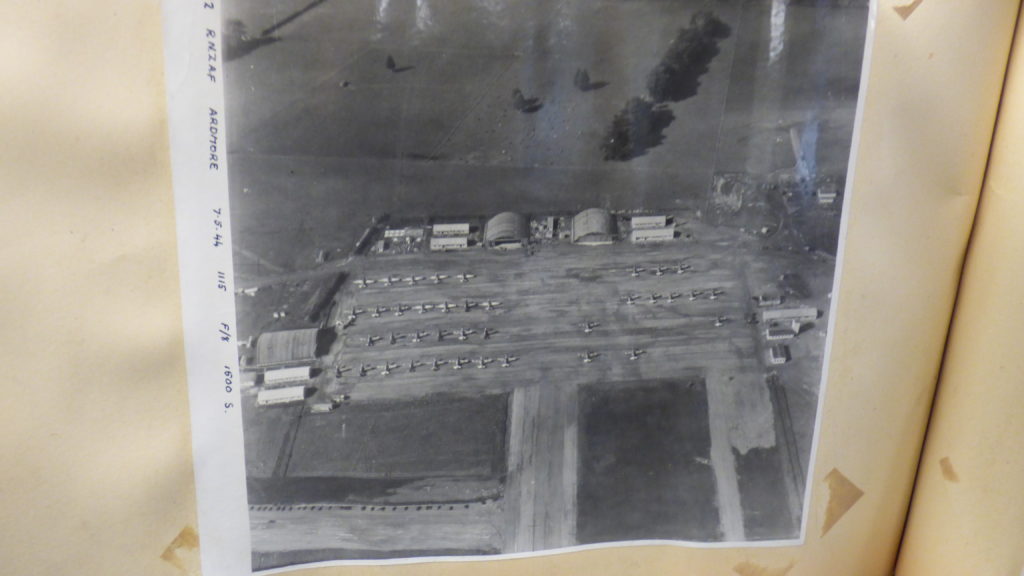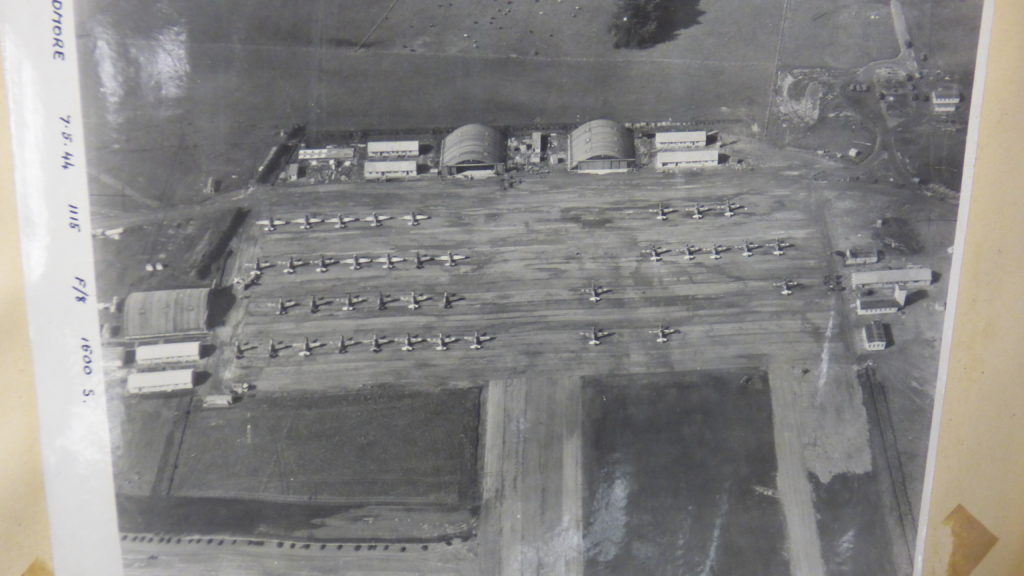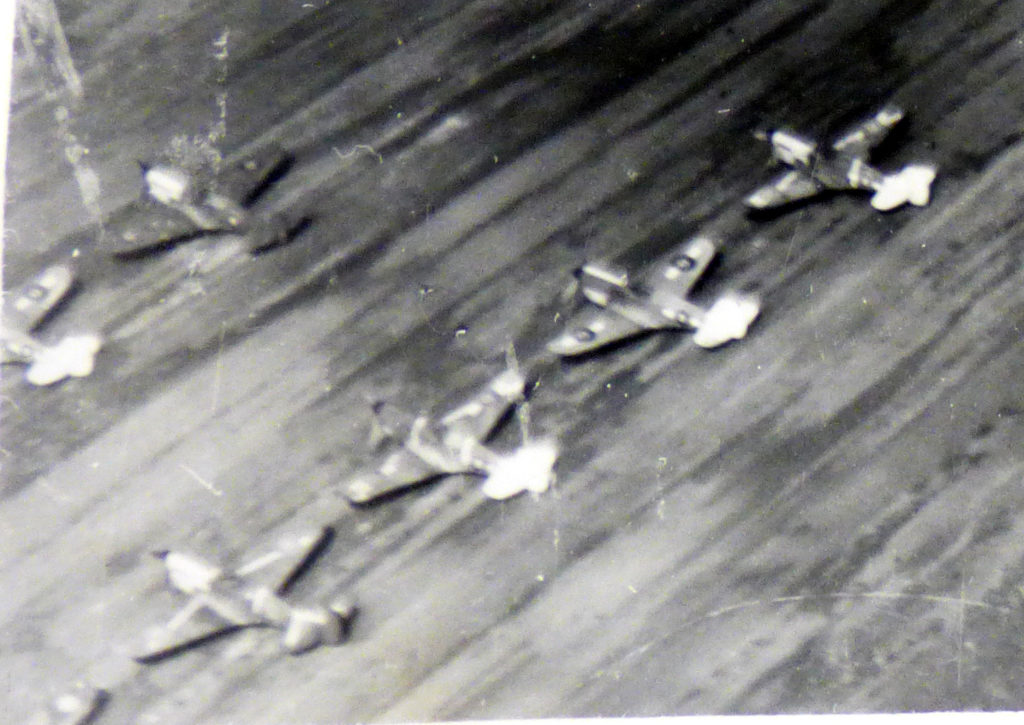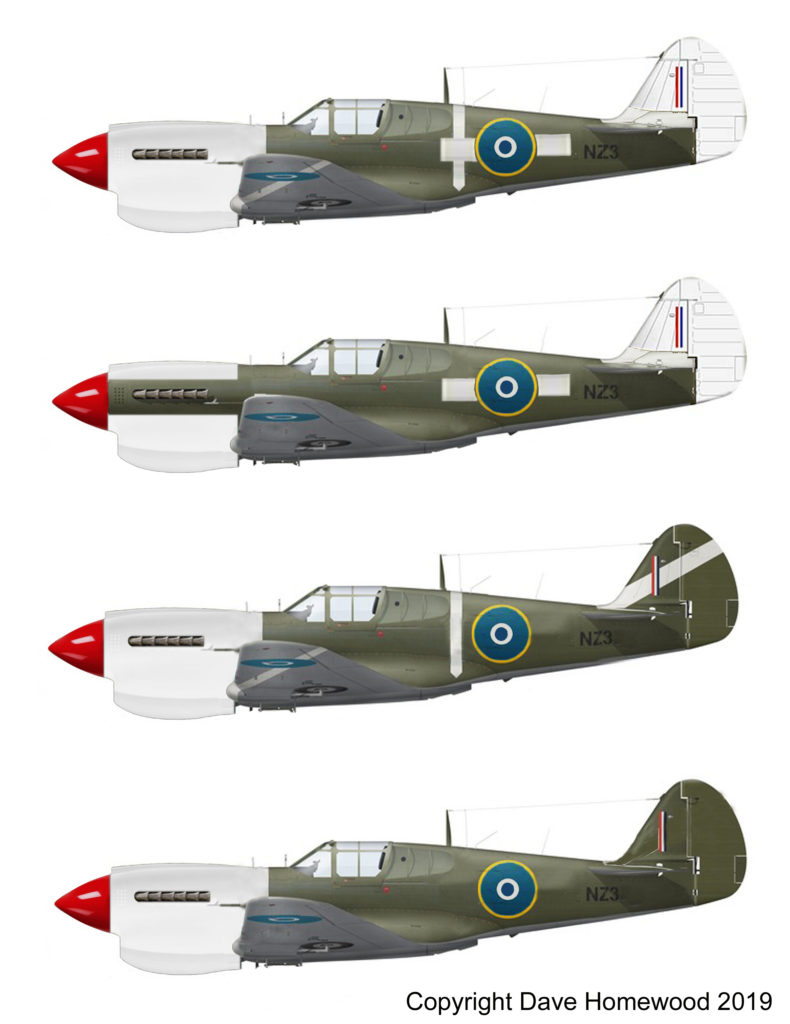|
|
Post by Dave Homewood on Dec 3, 2018 18:05:48 GMT 12
Ah yes, that's correct. And No. 57 OTU was a fighter OTU with Spitfires. So there is at least one RAF equivalent there I guess.
|
|
|
|
Post by baz62 on Dec 3, 2018 20:25:11 GMT 12
I seem to recall a chat about Spitfires with yellow noses (black and white photos people thought they were white), bit disconcerting I'd imagine what with some yellow nosed 109s from at least one German unit!
|
|
|
|
Post by Dave Homewood on Jan 22, 2019 22:40:13 GMT 12
This mystery has been on my mind for weeks. I'd love to find out more about those aircraft with the white cowls.
|
|
|
|
Post by angelsonefive on Jan 23, 2019 17:23:28 GMT 12
Just a theory....
There seems to be only a small number of aircraft with these mysterious markings.
Could these P-40s have been part of a 'Formation Demonstration Flight' ? The idea being that the pupil fighter pilots could see, from the ground, a live illustration of the evolutions required to change a Flights direction or change its formation to line astern, line abreast, or whatever.
The distinctive markings would have helped the watchers on the ground to keep track of who went where, and when, as the experienced pilots of the FDF showed them how it should be done.
More useful, I think, than diagrams on a blackboard though no doubt these would be used too.
|
|
|
|
Post by Dave Homewood on Jan 23, 2019 17:43:58 GMT 12
An interesting theory but the pilots who were arriving there at Ardmore at that time had all done formation training on Harvards already and would have been well versed in formation changes I'd think. Plus if these photos are from before the time of the formation of No. 4 OTU there, then the P-40's were all being used to work up squadrons, using experienced pilots and pilots who'd already done a course at No. 2 OTU.
|
|
|
|
Post by saratoga on Jan 23, 2019 17:59:38 GMT 12
P-40 aerobatics team, an early version of the red checkers...minus the red so they don't get confused with the Japanese...
|
|
|
|
Post by Dave Homewood on Jan 23, 2019 18:35:47 GMT 12
No Saratoga, there were no aerobatics teams in WWII
|
|
|
|
Post by saratoga on Jan 23, 2019 21:34:05 GMT 12
Labour gov't in power so probably wrapped in white plastic for long term storage....
|
|
|
|
Post by Dave Homewood on Feb 16, 2019 16:39:12 GMT 12
Going back through my photos I took of the archive documents on that trip I found two more snaps I took of photos very similar that have to be from the same photo shoot I think, and I note these ones have the date on the edge, the 7th of May 1944. This means it was during the period that No. 4 (Fighter) Operational Training Unit was at Ardmore. DavidD was the Fighter Gunnery School posted up there by then?   |
|
|
|
Post by davidd on Feb 16, 2019 17:28:06 GMT 12
Dave H,
No, the FGS did not move from Gisborne to Ardmore until early July 1944 (move ordered to be completed between 3rd and 8th of month). Note, this was only a very small unit.
No. 4 OTU was ordered to move from Ardmore to Ohakea in week commencing 12/6/44, with No. 3 Course to report to Ohakea on 19/6/44. No. 4 OTU at this time had an established strength of 10 officers, 19 SNCOs and 171 ORs. Aircraft establishment of Nos. 2 and 4 OTU's at this time was 37 P-40s and ten Harvards each, plus a small number of Vincent drogue towers.
David D
|
|
|
|
Post by Dave Homewood on Feb 16, 2019 18:16:06 GMT 12
OK, and that is after the OTU had moved which makes sense.
So that means it is likely the four or five P-40's with the white noses were indeed part of the OTU structure.
|
|
|
|
Post by davidd on Feb 17, 2019 10:30:53 GMT 12
As the average course size going through the Fighter OTUs was about 30 - 35 at this time, you can see why I was thinking along the lines of marked P-40s for the Section Leaders (usually permanent staff pilots, preferably with operational experience). So 30 trainee pilots would make up 10 sections (3 per section) plus one staff pilot per section as leader. However this is still just a theory, and I think that we all agree (if this was indeed an attempt at providing distinctive markings for leaders) that this was probably only a temporary marking scheme of probably (very?) short duration, which is why so little (maybe nil?) corroborative evidence seems to be available. As others have pointed out there seems to be little evidence available that RAF Fighter OTUs thought it necessary that Section Leader aircraft need to be given distinctive markings, and I have always thought that distinctive markings on the very front of a section leader's aircraft does not really seem the best placement for trainee pilots presumably approaching from behind.
David D
|
|
|
|
Post by Dave Homewood on Feb 17, 2019 10:54:09 GMT 12
Yes exactly my thoughts David.
I wonder if instead of being marked for leading, could it be that they were marked that way for student pilots to make attacks on, like the stripped cowl ring on the Corsair in Japan, so they could see the P-40 more easily?
I guess we should look into which pilots went through the OTU in May 1944 and see if any are still around to ask.
|
|
|
|
Post by davidd on Feb 17, 2019 12:18:23 GMT 12
Hmmm,not well enough versed on the procedures pertaining to the fighter pilot syllabus at OTUs (did they paste the syllabus into log books? - cannot remember ever seeing such a thing - perhaps the exercise names in the running logs are the best we will get, plus what was written by those pilots who wrote their own bios. No doubt the syllabus was originally based on the RAF OTU courses, but may have later incorporated changes introduced locally to reflect different conditions more relevant to the Pacific theatre. At the RNZAF Museum is held a set of Pilots Notes for the P-40 compiled by the staff of the CFS at Tauranga - this is one of the most detailed accounts of flying the P-40 that I have ever seen, but cannot recall if it included details from the OTU syllabus - possibly not. I think various forms of attack would have been taught, and for these a "target" pilot would be nominated for the other pilots in the Section to attack in turn. However cannot imagine that there would be occasions where one attacker would be flying at a formation - or did this happen? Perhaps I will have to read some of those bios again some day.
David D
|
|
|
|
Post by Dave Homewood on Feb 17, 2019 12:34:39 GMT 12
I have never seen the syllabus pasted into a logbook David.
However there is this at the National Archive, starting from a month after the photos were taken:
Royal New Zealand Air Force - Standard syllabus of training for No. 2 (Fighter) Operational Training Unit & No. 4 (Fighter) Operational Training Unit, June 1944, September 1944, February 1945, July 1945; Fighter Gunnery School, August 1944; Fighter Leaders' School, May 1945 (R16666583)
Do you think that would be worth looking into?
|
|
|
|
Post by davidd on Feb 17, 2019 13:26:03 GMT 12
Yes Dave, they do look VERY interesting! ON your next visit to Wellington perhaps?
Dave D
|
|
|
|
Post by Dave Homewood on Feb 17, 2019 13:35:30 GMT 12
Yep, on my list for the week after next
|
|
|
|
Post by Dave Homewood on Sept 28, 2019 17:06:31 GMT 12
Based on the four white-cowled P-40's in this photo:  I have created this:  |
|
|
|
Post by Dave Homewood on Sept 28, 2019 17:44:37 GMT 12
Perhaps some of the modellers here can take up the challenge and built a white nosed Ardmore P-40. I wish we had the serial numbers for them.
|
|
|
|
Post by saratoga on Sept 28, 2019 18:25:56 GMT 12
I think the partial white nose should be lower down, looks to be 2/3 up the chin, with the top all white.
|
|



